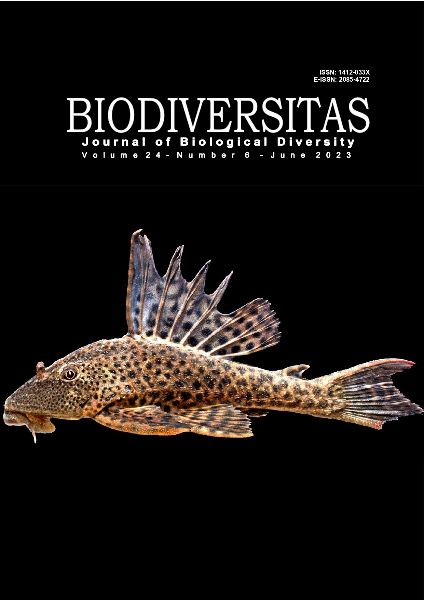Morphological responses, biomass production and nutrient of Pennisetum purpureum cv. Pakchong under different planting patterns and harvesting ages
##plugins.themes.bootstrap3.article.main##
Abstract
Abstract. Ernawati A, Abdullah L, Permana IG, Karti PDMH. 2023. Morphological responses, biomass production and nutrient of Pennisetum purpureum cv. Pakchong under different planting patterns and harvesting ages. Biodiversitas 24: 3439-3447. Napier grass is one of the most popular grasses in tropical and subtropical regions and is a promising forage crop due to its high biomass production, nutritional quality and wide-range adaptability. An optimal management practice is required to maintain production and quality of Napier grass. This experiment examined the morphological responses, forage biomass production, and nutrient biomass of the Napier grass var Thailand (Pakchong) grown under different planting patterns and harvesting ages. The experiment used a completely randomized factorial design 2 x 2, with the first factor was planting pattern (monoculture and intercropping with Indigofera zollingeriana) and the second factor was the harvesting age (50 and 60 days). Each treatment combination was trialed at 5x5 m plot with four replicates. The results showed that planting pattern and harvesting age had significant effect (p<0.05) on tiller numbers, leaves and stem biomass, stem-to-leaves ratio, fresh and dry weight production, and nutrient biomass, except for ash biomass. The highest tiller number was obtained in the intercropping pattern and harvesting age of 50 days. The highest leaves and stem biomass were produced in both planting pattern and harvesting age of 60 days. The fresh and dry weight production and nutrient biomass of Pakchong in intercropping pattern and harvesting of 60 days were higher than those of monoculture cropping. Nonetheless, effect on stem-to-leaves ratio had inconsistent result. The results of this study imply that the best production and nutrient biomass of Napier grass cv. Pakchong were obtained from the grass intercropped with Indigofera and harvesting age of 60 days.

